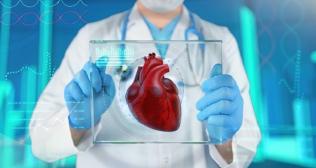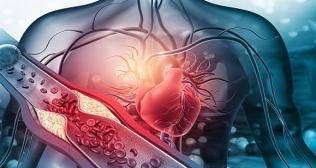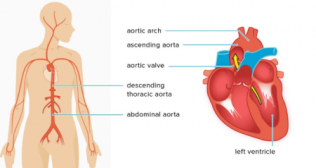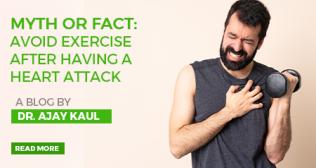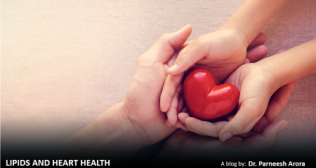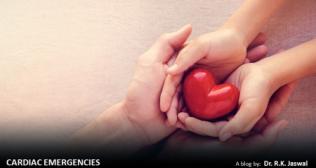
Dyspnea: Causes, diagnosis, and treatment
Think of climbing a steep hill and suddenly gasping for breath – this sensation is what a lot of people experience daily through dyspnea/shortness of breath. While it appears that it’s a simple inconvenience, Dyspnea is generally a signal from the body. Here, in this blog, let us learn in detail about what exactly is Dyspnea, its causes, diagnosis as well as treatment of Dyspnea:
What exactly is Dyspnea (or shortness of breath)?
Individuals who experience Dyspnea feel short of breath. Dyspnea can range from mild to severe. If this condition is long-term and persistent, it may seriously restrict activity and alleviate quality of life.
Dyspnea can result from lung, cardiac, vascular, neuromuscular, or metabolic ailment. As shortness of breath can result from many distinct medical conditions, it can be tough to discover the precise cause(s). Knowing the cause (s) can make it easier to treat.
Acute and chronic dyspnea
Acute and chronic dyspnea differ in how rapidly they begin and how long they last.
Acute dyspnea
This condition can come on quickly as well as doesn’t last very long (hours to days). Allergies, anxiety, physical activity as well as illness (similar to the common cold or the flu) can cause acute dyspnea. More severe conditions, like a heart attack, sudden airway narrowing (anaphylaxis) or blood clot (pulmonary embolism) can also cause acute dyspnea.
Chronic dyspnea
This condition refers to shortness of breath that lasts a long time (several weeks or longer) or keeps coming back. Ongoing health conditions such as asthma, heart failure and COPD can cause long term dyspnea. Not getting sufficient exercise can also make a person feel breathless all the time because their muscles are trying to get more oxygen.
Risk factors for Dyspnea
Shortness of breath is a typical symptom during intense physical activity or exertion. If it happens while the patient is at rest—or during unexpected situations—it can be a manifestation of a severe medical condition. If a person suffers from Dyspnea, they may also have any of these health problems:
Cardiac disease, Respiratory infection/pneumonia, Cancer, especially lung cancer, Emphysema or long-term bronchitis, Asthma, Hypersensitivity, Reflux as well as Obesity.
Causes of dyspnea/shortness of breath
Dyspnea can be caused by lot of conditions, few are more serious than others, including:
Respiratory conditions, such as asthma, chronic bronchitis as well as emphysema
Lung related conditions, such as chronic obstructive pulmonary disease (COPD), emphysema as well as pulmonary edema, effusion, pulmonary fibrosis, pulmonary hypertension, as well as pneumonia.
Heart related conditions, such as cardiomyopathy, congestive heart failure, also condition like diastolic dysfunction, systolic ventricular dysfunction, as well as abnormal heart rhythms
Cancer
Neuromuscular conditions
Anxiety conditions
Diagnosis of Dyspnea/Shortness of Breath
Dyspnea has a lot of causes, which can make it difficult to find a diagnosis.
Diagnostic methods for dyspnea or shortness of breath
To try to figure out what’s causing a person’s dyspnea, the person’s healthcare provider will perform a physical exam, comprising listening to person’s lungs with a stethoscope and noting down person’s blood pressure. They’ll put a sensor on a person’s finger to see quantity of oxygen person have in their blood.
They may also carry out additional testing, comprising:
- Chest X ray, CT scans/other special imaging tests. A person’s healthcare provider can utilise pictures of the inside of person’s chest to find out if there’s an issue with person’s lungs.
- Blood tests. Healthcare providers can utilise blood tests to check for anaemia or illnesses.
- Lung function tests. Tests that depict how well a person is breathing.
- Cardiopulmonary exercise testing. A person’s healthcare provider will have them use a treadmill or stationary bike for this test. The tests can tell healthcare providers the amount of oxygen a person takes in as well as carbon dioxide person will let out during exercise.
Treatment of shortness of breath (dyspnea)
How shortness of breath is treated relies on what's causing it.
Treatments that can improve person's breathing include:
Physical activity. Exercise can strengthen a person's heart as well as lungs, reducing their need to work as hard.
Relaxation techniques. Healthcare providers can teach relaxation techniques as well as breathing exercises. These can help with dyspnea from underlying breathing conditions as well as anxiety.
Medicine. Inhaled drugs called bronchodilators can relax a person's airways as well as are prescribed for asthma as well as COPD. Medication to get rid of pain or anxiety can help with breathlessness.
Oxygen therapy. A person's healthcare provider will prescribe extra oxygen if the person's blood oxygen level is extremely low. It's supplied through a mask/ tube in a person's nose.
In a nutshell, Dyspnea, or shortness of breath, is the feeling that a person can’t get enough air into their lungs. It might feel like their chest is tight, they're gasping for air or they're working harder to breathe. Heart as well as lung conditions are common causes of dyspnea.







